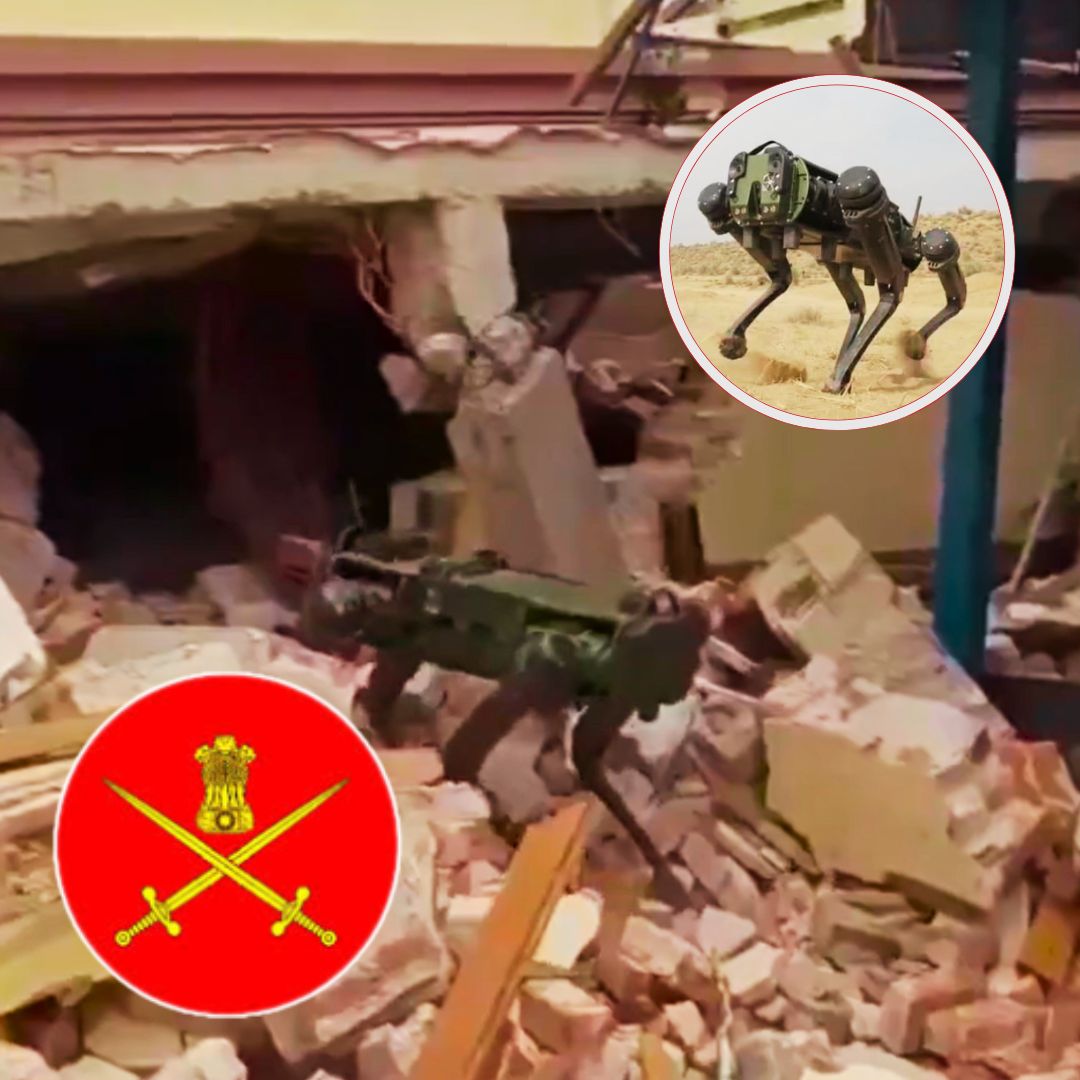India has ramped up its humanitarian response to Myanmar following the devastating 7.7-magnitude earthquake on March 28, which claimed over 3,600 lives and displaced millions. Under Operation Brahma, the Indian Army has deployed robotic mules and nano drones to assess structural damage and assist in search-and-rescue missions. India has provided over 650 metric tonnes of relief materials via seven IAF aircraft and five naval ships, alongside medical aid through a field hospital that has treated more than 1,300 patients.
Prime Minister Narendra Modi reaffirmed India’s commitment to aiding its neighbour, while Myanmar’s military leader Min Aung Hlaing expressed gratitude for the assistance.
Cutting-Edge Relief: Robots and Drones Take Centre Stage
India’s advanced rescue tools, including robotic mules and nano drones, have been instrumental in navigating debris and locating survivors in Myanmar’s hardest-hit regions. These robotic mules, known as SAR Robo Mules (Multi-Utility Legged Equipment), are designed to traverse unstable terrain, enabling precise assessments of damaged structures. Nano drones equipped with thermal imaging cameras have been deployed to locate survivors trapped under rubble.
Videos shared by the Indian Army showcase these machines in action, demonstrating their effectiveness in technical evaluations and rescue operations. The field hospital set up by India has performed over 33 surgeries, addressing trauma cases and injuries caused by the disaster. Senior General Min Aung Hlaing visited the hospital on April 6, praising India’s efforts.
Operation Brahma: A Swift Response to Regional Devastation
The earthquake struck Myanmar along the Sagaing Fault, causing widespread destruction across Mandalay, Naypyidaw, and surrounding areas. India launched Operation Brahma within 24 hours of the disaster, dispatching relief supplies, medical teams, and specialised equipment.
The mission includes contributions from the Indian Navy, which delivered essential items such as food packets, medicines, water purifiers, solar lamps, and tents to affected regions. An 80-member NDRF team conducted search-and-rescue operations before returning home earlier this week. The operation underscores India’s commitment to regional solidarity under its “Neighbourhood First” policy.
Humanitarian Aid Beyond Borders
India’s assistance extends beyond immediate rescue efforts. Engineers from the Indian Army are working closely with Myanmar’s authorities to assess unsafe buildings and plan reconstruction efforts. Medical teams have treated over 1,650 patients at field hospitals while providing psychological support to traumatised survivors. Relief materials totalling over 650 metric tonnes have been distributed across affected areas. This comprehensive approach highlights India’s dedication to long-term recovery and rebuilding in disaster-stricken regions.
#OperationBrahma ||
— All India Radio News (@airnewsalerts) April 11, 2025
Indian Army is using robotic mules and Nano Drones for Search and Rescue (SAR) operations in Mandalay, Myanmar. #MyanmarEarthquake | @adgpi pic.twitter.com/tPPGgxlCi9
The Logical Indian’s Perspective
India’s deployment of cutting-edge technology for disaster relief showcases innovation paired with compassion. Operation Brahma highlights the importance of international cooperation in addressing humanitarian crises while setting a benchmark for tech-driven rescue missions.
As Myanmar rebuilds from this tragedy, it serves as a reminder of the shared responsibility nations hold in fostering resilience and recovery. How can technology further transform global disaster management efforts? Share your thoughts below.
Indian Army using robotic mules for Search and Rescue (SAR) operations in #Myanmar. #OperationBrahma pic.twitter.com/WnGluQXfce
— News IADN (@NewsIADN) April 11, 2025











